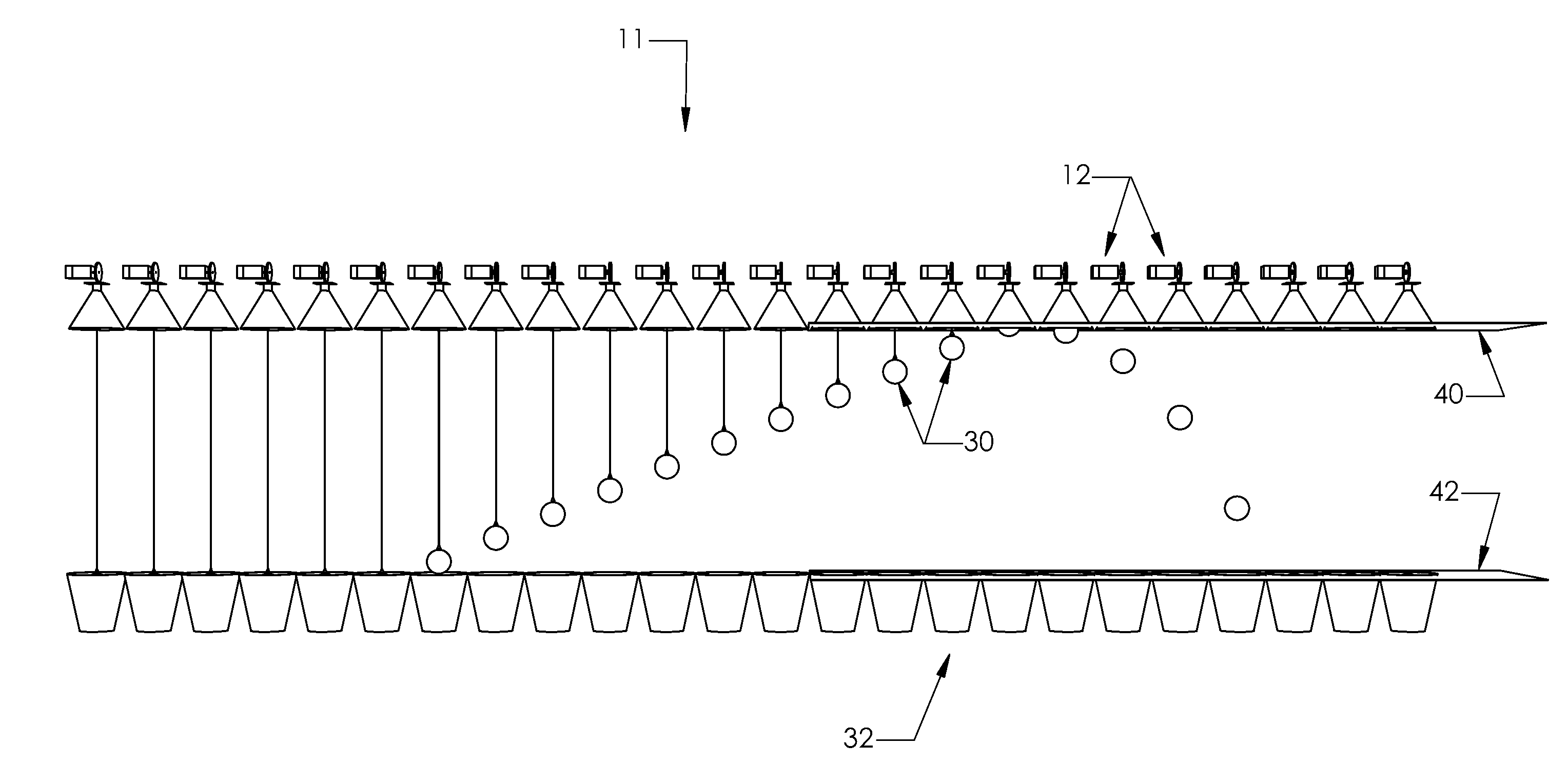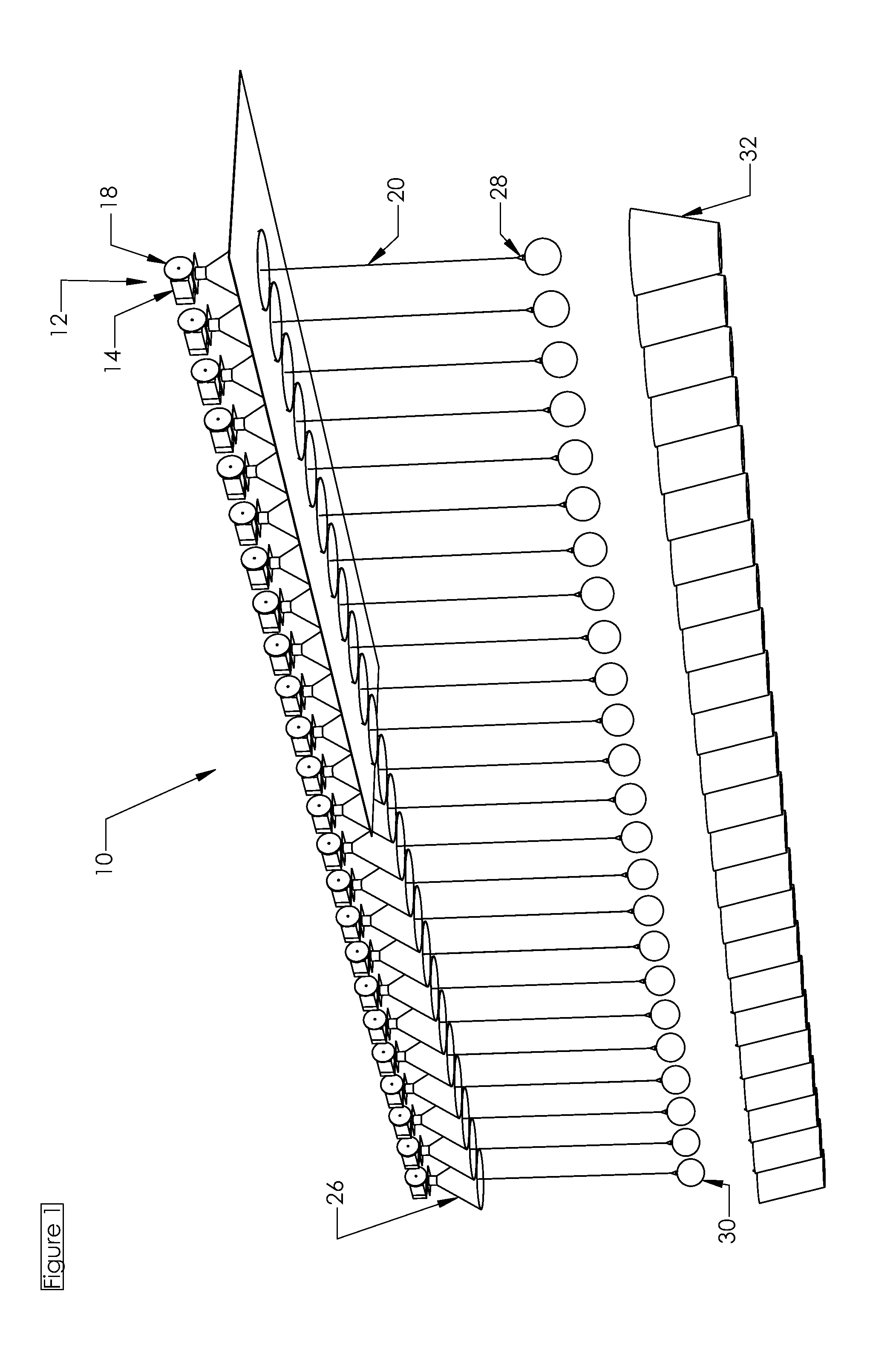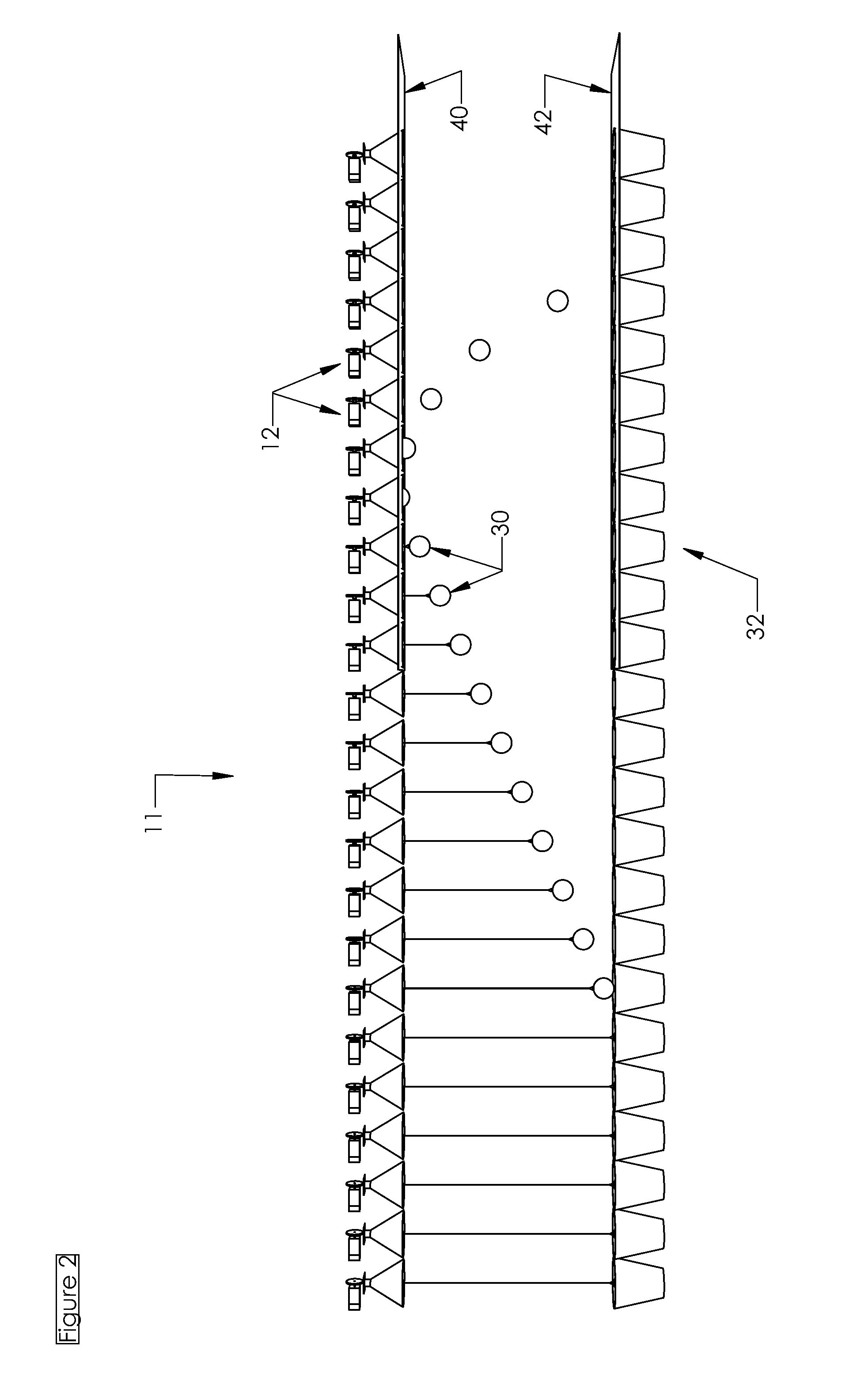Method and apparatus for producing kinetic imagery
a technology of kinetic imagery and apparatus, applied in the direction of hoisting equipment, advertising, identification means, etc., can solve the problems of limited kinetic art pieces to a discreet level, primarily to single-speed art pieces, etc., and achieve the effect of little energy loss from friction
- Summary
- Abstract
- Description
- Claims
- Application Information
AI Technical Summary
Benefits of technology
Problems solved by technology
Method used
Image
Examples
Embodiment Construction
[0024]The embodiments of the invention described below are not intended to be exhaustive or to limit the invention to the precise structures and operations disclosed. Rather, the described embodiments have been chosen to explain the principles of the invention and its application, operation and use in order to best enable others skilled in the art to follow its teachings.
[0025]Referring to FIG. 1, an apparatus for repetitively lifting and lowering objects 10 in accordance with the invention is shown. Apparatus 10 includes a plurality of kinetic releasing elements 12 (as best seen in FIG. 3) equally spaced in this embodiment in a linear pattern. Each kinetic releasing element 12 includes a top unit 14. Top unit 14 supports the remainder of the kinetic releasing element and houses a motor 16. Each kinetic releasing element also includes a rotary member in the form of a pulley 18 connected to the motor through a motor shaft 17 and a cord 20 attached at its distal end 22 to the outer ci...
PUM
 Login to View More
Login to View More Abstract
Description
Claims
Application Information
 Login to View More
Login to View More - R&D
- Intellectual Property
- Life Sciences
- Materials
- Tech Scout
- Unparalleled Data Quality
- Higher Quality Content
- 60% Fewer Hallucinations
Browse by: Latest US Patents, China's latest patents, Technical Efficacy Thesaurus, Application Domain, Technology Topic, Popular Technical Reports.
© 2025 PatSnap. All rights reserved.Legal|Privacy policy|Modern Slavery Act Transparency Statement|Sitemap|About US| Contact US: help@patsnap.com



